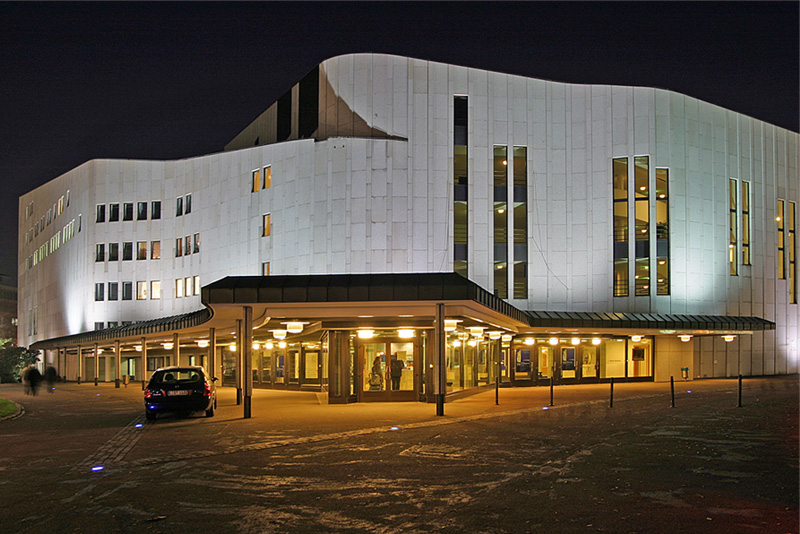
Opera House, Essen
Saynatsalo Town Hall
Who knows if Alvar Aalto was the all-time best architect or not - or if such a thing could exist? He was, though, held in the highest esteem of most of the better architects with whom I'm personally acquainted.
The reasons for this aren't numerous or complicated, once the underlying essentials for any exceptional architect are assumed.
- He broke with ideas of form and ornament from the past
- He was inquisitive and inventive. He brought an analogy to ornament, delighting the perceptions, in functional objects of construction, using materials that reinforced one another in utility, warmth and comfort. At the same time, the images of his buildings and places possessed a definite vocabulary of his own invention, and an edge that characterizes the best of modern architecture's associations.
- His work was sufficiently compelling, and without pretentious exhibitry, PR effort or impracticality that he was accorded respect and admiration by his peers, those who drove the architecture of his era.
- In practical yet artful ways, his designs drew from nature and interpreted nature's forms much more than overtly intellectual theoretical pursuits. At the same time, the art of his expression of architecture has inspired serious and sophisiticated scholars to struggle to articulate and theorize the qualities that made up his work.

Finlandia Hall
Aalto was intellectually gifted, and I'm sure he could theorize with anyone. But, he approached design, I think, more as a craft than as an intellectual exercise, and sought inspiration from the rich natural environment of Finland. Lakes, forests, snow and ice cover, traditional expressions of materials.
Also, he always tried to find ways to acknowledge and provide for those who'd use the buildiing. All architects do this, if too often unevenly, but Aalto took it further than most. His thoughtfulness was striking. He considered tactile properties of the materials of objects within a place, and considered things like the fact that a child can't conveniently reach up to the usual height of a door pull.
Concrete columns in a large foyer might be faced in tile up to seven or eight feet, the height of a person's reach, because people often like to lean against them. A door pull he designed had two half-valentine-shapes, one above the other, so a child could easily manage opening the door. In other words, he didn't stop with forms that were beautiful, maybe, and met a building's functional needs. He made sure the colors, materials, lighting and acoustics were truly comfortable to experience on multiple levels.
This thoughtfulness, meticulous attention to comfort and its supporting details, didn't interfere in any sense with his command of formal expression. He was able to function on more levels more effectively than most, in addtition to a talent that may have been genius in the sculptural crafting of form itself.

Ceiling detail, Viipuri Library
Links
Two articles on Aalto in Regencyshop.com
Essential Architecture's entry on Aalto
Terrific photos of Villa Mairea
Photos, Viipuri Library, 1929-35
Restoration Log, Viipuri Library
Brief youtube, Aalto sketching
NY Times article, Artek Furniture
Saynatsalo, Finland Town Hall
Barbican Museum, London Aalto Exhibit
"Aalto freson"



No comments:
Post a Comment